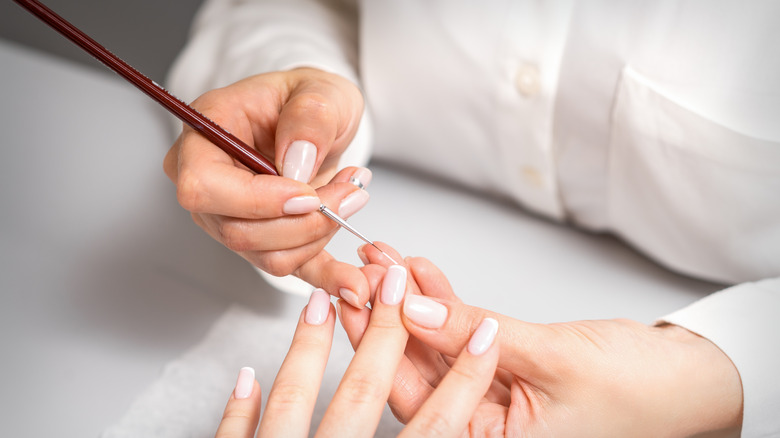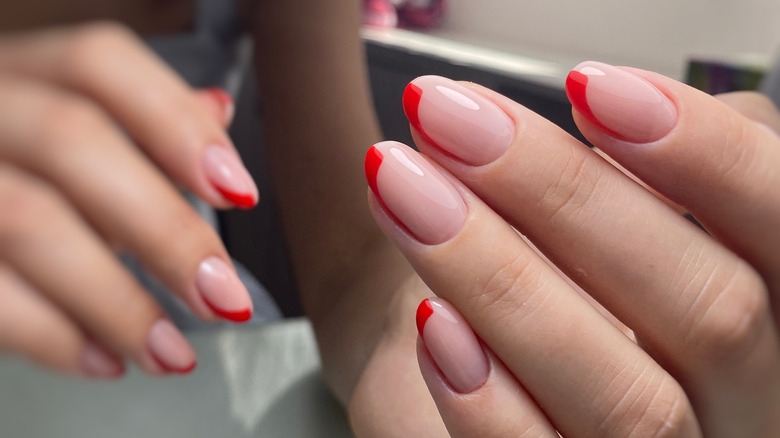How Does Gel Nail Polish Compare To Regular Polish?
Is it just us or does it seem like there's an almost endless variety of nail services available to choose from lately? From Gel X extensions to polygel or dip polish, we just can't keep up with the cutting-edge technology. While we understand some basics and can usually pick out the color we want our nails to be, the specifics — like if we should get gel or regular nail polish — sometimes remain a mystery. With gel manicures costing a few extra bucks more than your regular mani (via Kiara Sky), there's something extra we're getting from the service, right? Long story short, the answer is yes: The polish is less likely to chip.
The thing about gel nail polish is that is "comprised of stronger ingredients that grasp the nail tighter than traditional lacquers and are strong enough to stand up to daily wear and tear without chipping," Essie Global lead educator Rita Remark told Teen Vogue. This long-lasting formula requires a different drying technique (a UV lamp, for example) as the polish needs to be "cured" in oxygen. That also means fewer coats are needed and dry-time is much faster. There is no more worrying about messing up your mani while waiting for the polish to dry if you're using a gel option!
What else should you know about gel polish? Read on to find out.
Is gel polish better than regular polish?
As with any nail service, there are pros and cons to getting a manicure with gel nail polish. Though gel polish may be long-lasting and better looking, it can also be toxic to your skin, nails, and overall health. According to Teen Vogue, some (not all) polishes utilize ingredients like dibutyl phthalate, formaldehyde, and toluene in their formulas, which are carcinogens. Here's a few other things to look out for.
Since gel polish requires a UV (or LED) lamp to dry down, your body is being exposed to radiation. It's only for short amount of time but still not ideal. No, LED nail lamps are not a "safer" option compared to UV lamps. "Although many people mistakenly believe these lamps do not use UVA [rays] to cure, they, in fact, use higher intensities of UVA wavelengths in order to achieve the shorter curing times," Dr. Chris Adigun, a dermatologist, told Teen Vogue. "This higher intensity of UVA irradiance means that it requires less time for these lamps to potentially harm the skin."
That's important to keep in mind. Additionally, the removal process — achieved by soaking the polish in acetone and removing with a nail scraper — can be damaging to your skin and nail health, per the outlet. Regular nail polish may have its faults — examples include long drying time and short-lasting length, according to Kiara Sky — but it ultimately may be safer and healthier to use in the long run.

